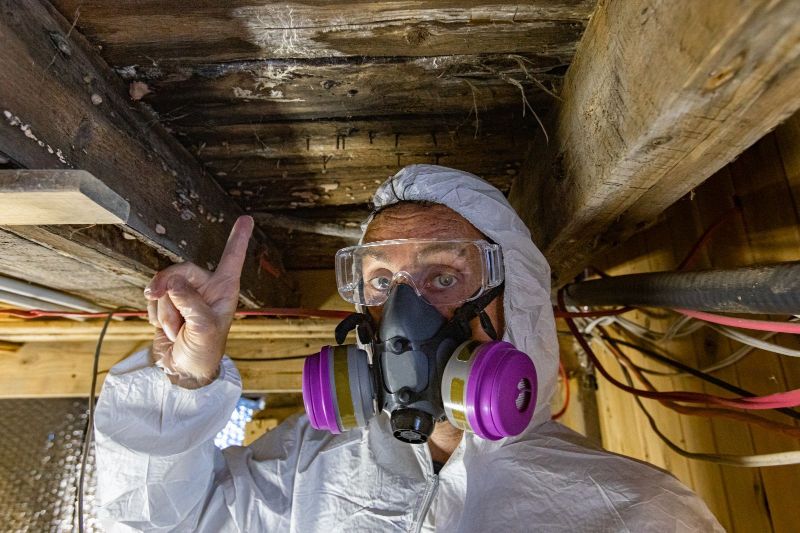Mold is a type of fungus that can grow in homes and other buildings. It can cause a variety of health problems, including respiratory infections, allergies, and asthma. Mold can also damage property.
Mold thrives in moist and humid environments. It can grow on a variety of surfaces, including wood, drywall, insulation, and fabric. Mold spores can travel through the air and enter homes through open windows and doors, as well as through heating and cooling systems.
Signs of mold growth
There are a few signs that may indicate mold growth in your home:
- A musty or earthy odor
- Visible mold growth on surfaces
- Water stains or discoloration on walls or ceilings
- High humidity levels in your home
- Health problems, such as respiratory infections, allergies, or asthma
If you suspect mold growth in your home, it is important to take action right away. Mold can spread quickly and cause serious health problems.
How to safeguard your home from mold
There are a number of things you can do to safeguard your home from mold:
- Control moisture levels in your home. Keep humidity levels below 60%. You can do this by using a dehumidifier, running exhaust fans in the kitchen and bathroom, and repairing any leaks in your home.
- Improve ventilation in your home. Open windows and doors regularly to allow fresh air to circulate. You can also install exhaust fans in the kitchen and bathroom.
- Clean and dry all surfaces regularly. This includes walls, ceilings, floors, and countertops. Be sure to dry all surfaces thoroughly after cleaning.
- Fix any leaks in your home right away. Leaks can provide the moisture that mold needs to grow.
- Remove any moldy materials from your home. If you find mold growth, remove it immediately. If the mold growth is large or extensive, you may need to hire a professional mold remediation company.
Tips for removing mold
If you find mold growth in your home, you can remove it yourself using the following tips:
- Wear protective gear. This includes gloves, a mask, and goggles.
- Isolate the area. Close doors and windows to prevent the mold spores from spreading.
- Clean the moldy surface. Use a mixture of one part bleach to ten parts water to clean the moldy surface. Be sure to scrub the surface thoroughly.
- Dry the surface completely. Once the surface is clean, dry it completely with a fan or dehumidifier.
- Dispose of the moldy materials carefully. Place the moldy materials in a sealed garbage bag and throw them away.
If you have any concerns about mold growth in your home, it is important to consult with a professional mold remediation company.
Preventing mold growth in the bathroom
The bathroom is one of the most common places for mold growth in homes. This is because the bathroom is often humid and warm. There are a few things you can do to prevent mold growth in the bathroom:
- Install a shower fan. A shower fan will help to remove moisture from the air in the bathroom.
- Run the shower fan for at least 30 minutes after showering. This will help to dry out the bathroom and remove any moisture that may have accumulated.
- Wipe down the shower or bathtub after using it. This will help to remove any soap scum or other residue that could attract mold.
- Keep the bathroom clean and dry. Mop the floor regularly and clean the sink and toilet bowl regularly.
- Repair any leaks in the bathroom right away. Leaks can provide the moisture that mold needs to grow.
Preventing mold growth in the kitchen
The kitchen is another common place for mold growth in homes. This is because the kitchen often has high humidity levels and food particles that can attract mold. There are a few things you can do to prevent mold growth in the kitchen:
- Clean up food spills and splatters immediately. Don't let food particles sit out and attract mold.
- Store food properly. Keep food in sealed containers or in the refrigerator.
- Take out the trash regularly. Don't let trash build up in the kitchen.
- Clean and disinfect the countertops regularly. Use a mixture of one part bleach to ten parts water to disinfect the countertops.
- Repair any leaks in the kitchen right away. Leaks can provide the moisture that mold needs to grow.
Preventing mold growth in the basement
Basements are often prone to mold growth because they are often damp and dark. There are a few things you can do to prevent mold growth in the basement:
- Keep the basement dry. Use a dehumidifier to control humidity levels in the basement.
- Improve ventilation in the basement. Open windows and doors to allow fresh air to circulate. You can also install a vent fan in the basement.

